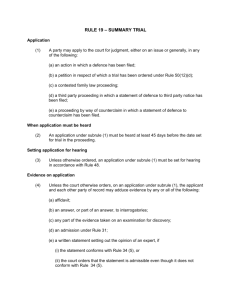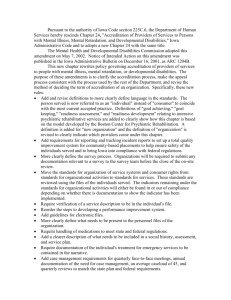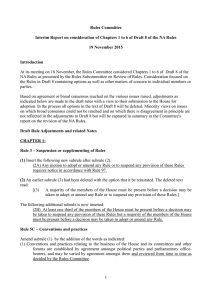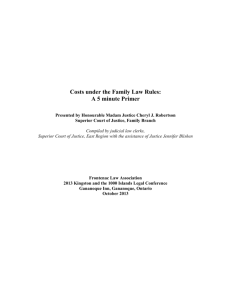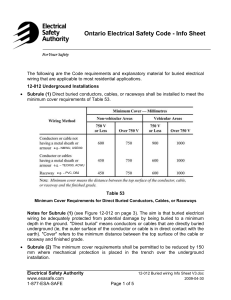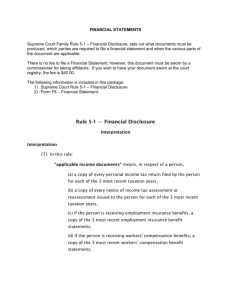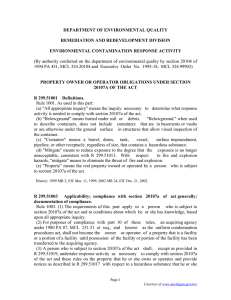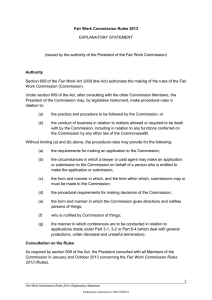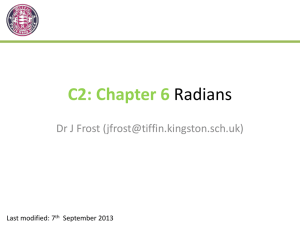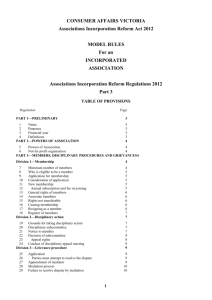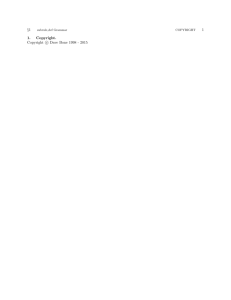Homework Set #3
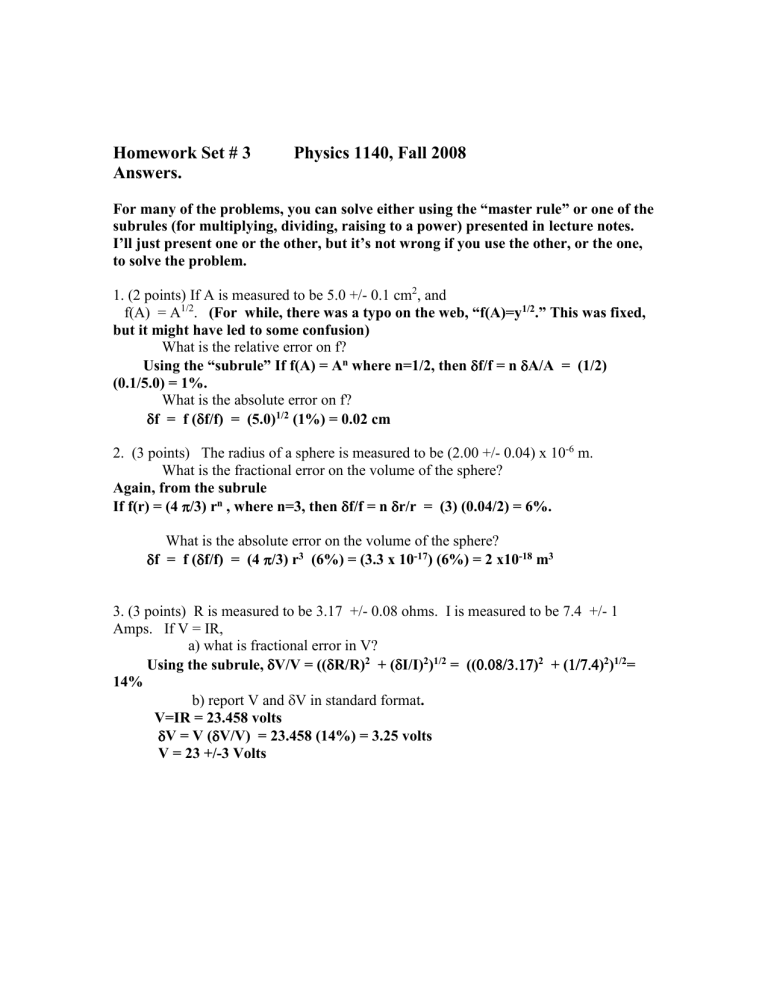
Homework Set # 3
Answers.
Physics 1140, Fall 2008
For many of the problems, you can solve either using the “master rule” or one of the subrules (for multiplying, dividing, raising to a power) presented in lecture notes.
I’ll just present one or the other, but it’s not wrong if you use the other, or the one, to solve the problem.
1. (2 points) If A is measured to be 5.0 +/- 0.1 cm 2 , and
f(A) = A
1/2
.
(For while, there was a typo on the web, “f(A)=y 1/2 .” This was fixed, but it might have led to some confusion)
What is the relative error on f?
Using the “subrule” If f(A) = A n where n=1/2, then
f/f = n
A/A = (1/2)
(0.1/5.0) = 1%.
What is the absolute error on f?
f = f (
f/f) = (5.0) 1/2 (1%) = 0.02 cm
2. (3 points) The radius of a sphere is measured to be (2.00 +/- 0.04) x 10
-6
m.
What is the fractional error on the volume of the sphere?
Again, from the subrule
If f(r) = (4
/3) r n , where n=3, then
f/f = n
r/r = (3) (0.04/2) = 6%.
What is the absolute error on the volume of the sphere?
f = f (
f/f) = (4
/3) r 3 (6%) = (3.3 x 10 -17 ) (6%) = 2 x10 -18 m 3
3. (3 points) R is measured to be 3.17 +/- 0.08 ohms. I is measured to be 7.4 +/- 1
Amps. If V = IR,
a) what is fractional error in V?
Using the subrule,
V/V = ((
R/R) 2 + (
I/I) 2 ) 1/2 = ((
) 2 + (
) 2 ) 1/2 =
14%
b) report V and
V in standard format .
V=IR = 23.458 volts
V = V (
V/V) = 23.458 (14%) = 3.25 volts
V = 23 +/-3 Volts
4. (3 points) The length of a rectangular field is measured to be 30 +/- 2 m. The width is
10.0 +/- 0.1 m. Calculate the area, the uncertainty in the area, and present answer in standard format.
From the subrule:
A/A = ((
L/L) 2 + (
W/W) 2 ) 1/2 = ((
) 2 + (
) 2 ) 1/2 = 6.7%
A=LW = 300 m 2
A = A (
A/A) = 300 (7%) = 20 m 2
A = 300 +/- 20 m 2 or, you can use the “master rule”, calculate dA/dW, dA/dL, and so on.
You’ll get the same answer for
A in the end.
5. (3 points) We learned in class a “subrule” for quotients, the subrule being a special case of the Master Rule. Make this connection explicit. That is, given the “Master Rule”
(from lecture notes, or Taylor eqn 3.47), show that
for f=x/y,
f/f = ( (
x/x)
2
+ (
y/y)
2
)
1/2
The master rule says that if f(x,y) = x/y, then
f = ( (df/dx
x) 2 + (df/dy
y) 2 ) 1/2 = ( ((1/y)
x) 2 + ((-x/y 2 )
y) 2 ) 1/2
so that’s the absolute error. To get the relative error,
f/f, divide through by f.
f/f =
f/(x/y) =( ((1/y)
x) 2 + ((-x/y 2 )
y) 2 ) 1/2 /(x/y) = (skip some algebra here…)
=( (
x/x) 2 + (
y/y) 2 ) 1/2 , which is the “subrule” we were trying to prove.
6. (2 points) We are trying to measure a velocity. We measure the distance to an accuracy of 13%, and the time to an accuracy of 8%. What is the fractional accuracy with which we determine the velocity?
From the subrule, we know that if f=x/y, the relative error on f is the relative error on x added in quadrature with the relative error on y.
So v = d/t.
v/v = ((
d/d) 2 + (
t/t) 2 ) 1/2 = ((
) 2 + (
) 2 ) 1/2 = .15 or 15%
7. (3 points) F = 70 +/- 1 Newton. k = 300 +/- 5 Newtons/meter, and S=F/k.
What is S and
S , reported in standard format?
From the subrule:
S/S = ((
F/F) 2 + (
k/k) 2 ) 1/2 = ((
) 2 + (
) 2 ) 1/2 = .022
S=F/k= 0.2333 m
S = S (
S/S) = 0.2333 (0.022) = 0.0051 m
S = 0.233 +/- 0.005 m or, you can use the “master rule”, calculate dS/dF, dS/dk, and so on.
You’ll get the same answer for
A in the end.
8. (5 points) A = 5.2 +/- 0.7 cm
= 34.2 +/- 0.2 degrees
P(A,
) = A cos (
) Use the master rule to determine P and
P. And report in standard format. Hint, if you try to do anything that is related to calculus and trigonometry, think “radians”, not “degrees”.
Let’s convert the angle into radians=
=(34.2 +/- 0.2) degrees (
/180 radian/degree) = 0.5969 +/- 0.0035 radians
Then we use the master rule
P = ( (dP/dA
A) 2 + ((dP/d
) 2 ) 1/2 we’ll need these partial derivatives: dP/dA = cos (
)
dP/d
= - A sin (
) plug into the master rule,
P = ( (cos (
)
A) 2 + ((- A sin (
)
)2) 1/2
= ( (0.827
) 2 + ((- 2.9
) 2 ) 1/2 = 0.58 cm
P = A cos(
) = 4.3008 cm in Standard fornat:
P = 4.3 +/- 0.6 cm
